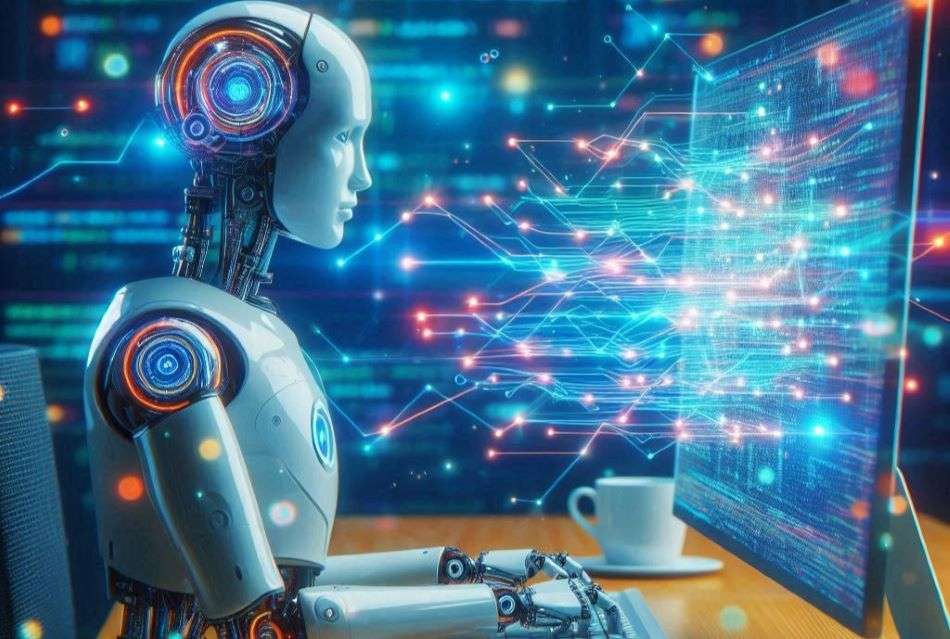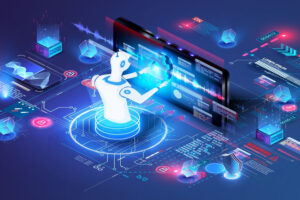In the ever-evolving realm of digital creation, AI-powered visual storytelling has emerged as a transformative force. As technology continues to advance, digital creators are increasingly leveraging artificial intelligence to craft compelling narratives that captivate and engage audiences. The integration of AI into visual storytelling not only enhances creativity but also offers unprecedented opportunities for innovation.
At its core, AI-powered visual storytelling involves the use of artificial intelligence technologies to create, enhance, and optimize visual narratives. This innovative approach allows creators to automate various aspects of storytelling, from generating visuals to personalizing content for individual viewers. The result is a more dynamic and immersive experience that resonates with audiences on a deeper level.

The Rise of AI in Digital Storytelling
The rise of AI in digital storytelling is reshaping the way stories are told and consumed. With AI algorithms capable of analyzing vast amounts of data, creators can gain valuable insights into audience preferences and tailor their narratives accordingly. This data-driven approach enables the creation of highly personalized content that speaks directly to the interests and emotions of viewers.
Benefits of AI in Visual Storytelling
One of the key benefits of AI in visual storytelling is its ability to automate repetitive tasks, allowing creators to focus on the creative aspects of their work. By automating tasks such as video editing, image enhancement, and content curation, AI frees up valuable time and resources, enabling creators to produce higher-quality content in less time.
Moreover, AI-powered tools can enhance the visual aspects of storytelling, offering features such as automated scene detection, facial recognition, and emotion analysis. These capabilities enable creators to craft more engaging and emotionally resonant narratives that capture the attention of viewers.
Challenges and Considerations
While the benefits of AI in visual storytelling are numerous, there are also challenges and considerations to keep in mind. One of the primary challenges is ensuring that AI-generated content remains authentic and aligns with the creator’s vision. Additionally, there are ethical considerations related to data privacy and the potential for bias in AI algorithms.
To address these challenges, creators must be mindful of the data they use and ensure that their AI tools are transparent and accountable. By doing so, they can harness the power of AI to enhance their storytelling while maintaining the integrity of their narratives.
Applications of AI in Visual Storytelling
AI-powered visual storytelling has a wide range of applications across various industries. From marketing and advertising to entertainment and education, AI is transforming the way visual narratives are created and shared.
Marketing and Advertising
In the realm of marketing and advertising, AI-powered visual storytelling enables brands to create personalized and engaging content that resonates with their target audiences. By analyzing consumer data, AI can help brands identify key trends and preferences, allowing them to tailor their messaging and visuals accordingly.
One example of this is the use of AI in video personalization, where brands can create customized video ads that speak directly to individual viewers. This approach not only enhances engagement but also improves conversion rates and brand loyalty. For more insights on AI in video personalization, you can visit AI in Video Personalization.
Entertainment
In the entertainment industry, AI is being used to create immersive and interactive experiences that captivate audiences. From AI-generated visual effects in movies to interactive storytelling in video games, AI is pushing the boundaries of what’s possible in entertainment. For more on AI tools for video creation, explore AI Tools for YouTube Videos.
Education
In education, AI-powered visual storytelling is being used to create engaging and interactive learning experiences. By incorporating AI into educational content, educators can create personalized learning paths that cater to the unique needs and interests of each student. This approach not only enhances learning outcomes but also fosters a deeper understanding of complex concepts. Discover more about building AI videos for educational purposes at Building AI Videos for LinkedIn.
AI Tools for Visual Storytelling
A variety of AI tools are available to support creators in their visual storytelling endeavors. These tools offer features such as automated video editing, image generation, and content optimization, making it easier for creators to produce high-quality content efficiently.
For digital creators looking to explore AI tools for visual storytelling, resources such as Top AI Tools for Video Marketers provide valuable insights and recommendations.
AI Avatars and Virtual Characters
AI avatars and virtual characters are increasingly being used in visual storytelling to create more engaging and interactive experiences. These digital personas can be customized to represent specific brands or characters, adding a new dimension to storytelling. For businesses interested in leveraging AI avatars, the article on Best AI Avatars for Business Videos offers valuable insights.
The Future of AI-Powered Visual Storytelling
The future of AI-powered visual storytelling is bright, with endless possibilities for innovation and creativity. As AI technologies continue to evolve, creators will have access to even more powerful tools and capabilities, enabling them to push the boundaries of storytelling like never before.
By embracing AI-powered tools and techniques, digital creators can enhance their storytelling abilities and create content that resonates with audiences on a deeper level. For information on AI’s role in graphic design, explore the external resource at HubSpot’s AI for Graphic Design.
Conclusion
AI-powered visual storytelling is revolutionizing the way stories are told and consumed. By leveraging the power of AI, digital creators can create more engaging, personalized, and impactful narratives that captivate audiences and drive meaningful results. As the technology continues to evolve, the potential for innovation in visual storytelling is limitless.

Frequently Asked Questions (FAQ)
What is AI-powered visual storytelling?
AI-powered visual storytelling involves using artificial intelligence technologies to create, enhance, and optimize visual narratives. It allows creators to automate various aspects of storytelling, making the process more efficient and engaging.
How does AI enhance visual storytelling?
AI enhances visual storytelling by automating repetitive tasks, analyzing audience data, and offering features such as automated scene detection and emotion analysis. This enables creators to craft more engaging and personalized narratives.
What are some challenges associated with AI in visual storytelling?
Some challenges associated with AI in visual storytelling include ensuring authenticity, addressing ethical considerations related to data privacy, and preventing bias in AI algorithms. Creators must be mindful of these challenges to effectively leverage AI in their storytelling.







